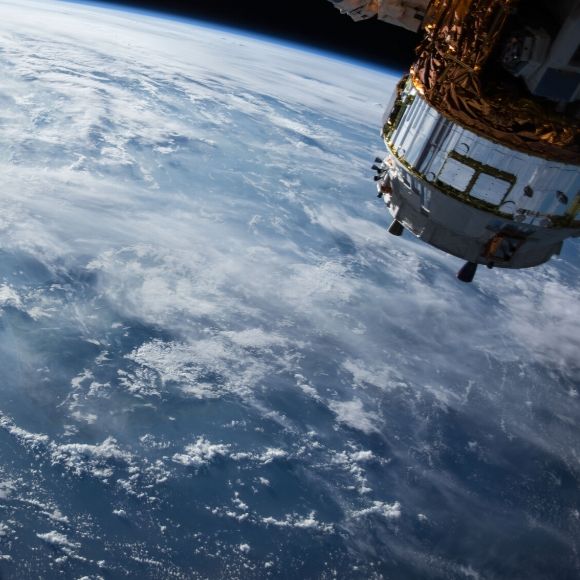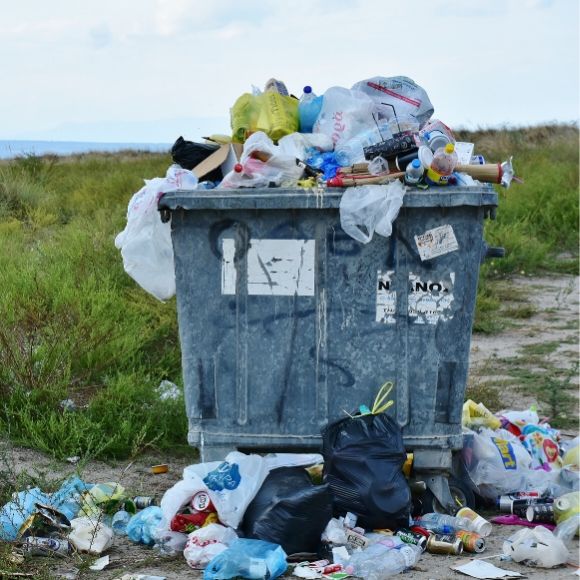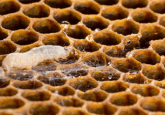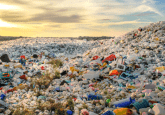New technologies to solve the Earth’s oldest problems

Fifty years on from the first Earth Day, the Wyss Institute is demonstrating how applying novel technologies to old ideas could finally tackle these environmental problems.
This year marked the 50th anniversary of the first Earth Day, the birth of what is now considered the ‘modern environmental revolution’. Despite considerable efforts made over the past 50 years, the environmental problems that motivated the creation of this movement are still present today.
Around the globe, scientists, politicians and activists are working together to combat these environmental problems with a fresh mindset and a new sense of urgency in line with recent warnings that we are running out of time.
At the forefront of this are institutions, such as the Wyss Institute (MA, USA), who are utilizing technological innovations in the fight for our planet. Rather than making small incremental changes, these researchers are approaching environmental problems with novel solutions in the hopes of making a difference.
The Wyss Institute recently released a series of press releases highlighting their efforts to tackle our biggest environmental problems, including air pollution, global warming and plastic pollution. These releases particularly demonstrated the power of applying 21st century technology to outdated or inefficient past concepts.
Cleaning the air by getting back to nature
One of the best examples of using novel technologies to improve inefficient environmental solutions has been seen in the development of catalytic converters from former Wyss Institute researchers Tanya Shirman and Elijah Shirman, who are both now Vice Presidents at Metalmark Innovations (MA, USA).
Catalytic converters, invented by Eugene Houdry in the 1950s, remove pollutants from the exhaust given off by cars and factories with an efficiency of around 98%, and policies enforcing their installation in cars have been successful in improving air quality in cities.
However, current catalytic converters fall short in dealing with the rising number of vehicles and industrial buildings, and consequently air quality has continued to decline. To effectively deal with current output levels of air pollutions, catalytic converters need to be more efficient but less expensive.
“Catalytic converters today have three major problems: they are expensive because of the precious metals, they are inefficient because a lot of the catalyst never comes in contact with the air it’s supposed to clean, and the catalysts only work within a specific temperature range, so before a car or a factory ‘warms up,’ they’re just spewing pollution that isn’t cleaned,” explained Tanya Shirman. “Right now, you would need to develop separate materials to address the problems of cost, performance and temperature stability, but our technology can solve all three issues at once.”
To solve the catalytic converter conundrum, the researchers turned to nature. Inspired by the nanoscale structure of a butterfly’s wing, the researchers developed a honeycomb-like scaffold with catalyst nanoparticles precisely placed along the structure to maximize the area of catalyst exposed to exhaust. This maximizes the efficiency of catalytic reactions, optimizing the catalysts for air purification.
The innovative design could easily be integrated into the existing catalytic converter production processes and, since 70-90% of the costs associated with production comes from purchasing the metal, this change could significantly lower costs and make air purification more affordable and accessible to all.
By applying this technology to industries that have traditionally benefited from catalytic converters, including cars and factories, the researchers hope to aid in significantly reducing the level of air pollution. However, the researchers believe that the technology could have further applications, such as indoor air purification.
“This platform is extremely flexible and allows us to quickly address specific problems that might come up regarding air purification. For example, it could be equipped with antiviral properties to filter virus particles out of the air, which would help reduce infections in hospital settings and could be deployed during future pandemics to help save lives,” commented Tanya Shirman.
25255
 Satellites are key to monitoring global carbon dioxide levels
Satellites are key to monitoring global carbon dioxide levels
New research has demonstrated how satellite-based Earth observation could allow for more accurate monitoring of ocean carbon dioxide levels and consequently evoke positive policy change.
Cold-SNAP: It’s in with the old and the new
Every year, more energy is used in the USA to simply cool buildings than is used overall by the entire continent of Africa. As the global temperature increases due to global warming, so will the demand for air conditioning, and experts predict global demands could triple by 2050.
The catch-22 is that the huge amount of energy needed to power air conditioning is mostly created by burning fossil fuels, which releases greenhouse gases and pollution into the atmosphere –contributing to global warming. Further to the fact, the refrigerants themselves have a greenhouse effect almost 10,000 times greater than carbon dioxide.
In order to put a stop to the vicious cycle between air conditioning and global warming, Wyss Institute researchers have combined innovative 21st century technology with outdated indirect evaporative cooling systems to create air conditioning that cools both people and the planet.
“Current refrigeration-based cooling technologies rely on the energy-intensive compression-induced phase change of specialty refrigerants, which not only incur significant operational demands in the form of fossil fuel consumption, but also ultimately release these high global warming potential refrigerants into the environment,” remarked Jack Alvarenga, one of the lead researchers on this project. “Unless cooling technologies evolve, the foreseen increased demand for space cooling will only exacerbate the issue of rising temperatures.”
Indirect evaporative cooling systems were introduced to the USA in the early 20th century, and although their lower energy requirements seem ideal, their complexity made them difficult and expensive to manufacture. They, therefore, have largely remained secondary to traditional mechanical vapor units.
This new technology, known as cold-SNAP, improves evaporative cooling systems through the use of 3D-printed ceramic coated on one side in a hydrophobic nanoscale material. This results in an effective heat exchange unit that is able to isolate evaporating water from cooled air. The coating acts as a water vapor barrier, limiting humidification while promoting heat transfer.
“Evaporative cooling is nature’s solution to efficient climate control. The relatively low energy requirements and large enthalpy of aqueous phase change make evaporation an ideal method for achieving space cooling,” Alvarenga explained. “In our bodies, evaporation of sweat serves to not only cool the surface of our skin, but also the warm blood flowing near this interface. We were motivated by being able to simply separate these processes (surface evaporation and sub-surface heat transfer) in an engineered system designed to achieve substantial cooling performance.”
Preliminary studies have shown that cold-SNAP could be up to four times more efficient than traditional air conditioning units, using 75% less energy than traditional units without compromising on its cooling ability. Furthermore, the system relies on the use of water rather than harmful refrigerants, reducing its overall environmental impact even further.
Not only does this novel system address the environmental issues associated with current air conditioning units, but the reduced energy requirements significantly reduce the running costs. This means that this new technology could bring air conditioning to those living along the equator, who need it the most.
“We are currently working closely with a global manufacturing partner to gauge the feasibility of our approach, as well as producing large scale prototypes that will be used for field testing to better assess the true potential of the technology,” Alvarenga remarked.
25256
 A tiny solution for plastic pollution: scientists discover polyurethane feeding bacteria
A tiny solution for plastic pollution: scientists discover polyurethane feeding bacteria
Scientists have identified a strain of bacteria that can feed on toxic polyurethane-based plastic products.
Micro-solutions for plastic pollution
Another of the Wyss Institute’s environmental endeavors has been in tackling plastic pollution. Since the 1950s we have produced around 8300 million metric tons of plastic, most of which is not biodegradable so can still be found filling up landfills or polluting the earth and its oceans. Whilst many have emphasized the importance of reducing our use of single-use plastic, our global reliance on plastic means that the problem can’t be solved through behavior modification alone.
One solution could be to roll out the use of biodegradable plastics, to prevent the buildup of plastics on the earth from continuing. The concern with bioplastics is that the majority are produced through fermenting plants and refining the products into the building blocks of plastic. Doing this on a large scale requires a lot of land, which would then pose its own environmental issues.
Now, however, Wyss Institute researchers Shannon Nangle and Marika Ziesack have found the tiny savior to put an end to plastics reign of terror – microbes!
By utilizing engineered microbes to produce the building blocks of plastic, they have succeeded in creating biodegradable plastics that would require a fraction of the space that traditional bioplastics demand, if produced on a large scale.
“Like all living organisms, bacteria need to take in food, extract energy and nutrients from it, and excrete waste in order to survive. Bacteria are very easy to grow and control, so scientists have been studying their inner workings for a long time, and we are now at a point where we can manipulate them genetically and metabolically to change what they’re eating and what they’re producing,” remarked Ziesack.
The star of the project is a microbe called Cupriavidus necator, which produces the polymer polyhydroxybutyrate (PHB). Whilst PHB is usually too brittle to use for plastic, Ziesack and Naggle altered the microbe’s metabolism so it instead produces polyhydroxyalkanoate, a polyester that is similar to PHB but is much more flexible.
Producing biodegradable polyhydroxyalkanoate is not a novel concept in itself, but the Circe process, as it is currently known, is the first method that has been able to produce the polymers cheaply enough that global use is actually feasible.
“Our microbes can dramatically reduce the price of producing these [biodegradable] polymers because we’re feeding them gases rather than expensive precursor compounds, and we’re avoiding all the economic and environmental costs of industrial agriculture that are baked into the price of plant-based bioplastics,” Nangle explained.
The researchers are now working on getting their system out into the real world to begin to solve the plastic problem. They don’t think the limits for the technology end with plastics, however, and believe their microbes could be used in places where neither fossil fuels or plants are available – outer space for example.
“We really don’t know yet what the limits of this technology are, because making plastics from microbes at a large scale has only recently been developed and implemented. But we’re committed to taking this project as far as it can go, and if one day that means Mars – that will be amazing,” concluded Ziesack.
Two steps forward, one look back
The cases presented here are great examples of how often the only way to move forward with a problem is to take another look at the past. By combining novel technologies with the solid foundations of imperfect solutions, the researchers here have been able to bring a completely fresh approach to old issues.
The Wyss Institute believes that humans have a responsibility to look after and preserve the natural world. The work they are doing to solve environmental problems certainly encompasses this principle and could be the key to restoring the earth.





